Disclosure: This post may contain affiliate links. I may earn a small commission for my endorsement, recommendation, testimonial, and/or link to any products or services from this website.
Simple, wholesome ingredients come together in a soft and fluffy loaf of homemade Oatmeal Bread! This classic farmhouse favorite makes a delicious base for sandwiches, a perfect morning toast, and a hearty companion with a warm bowl of soup. Kids and adults love the soft texture and the slightly sweet taste of Grandma’s oatmeal bread!
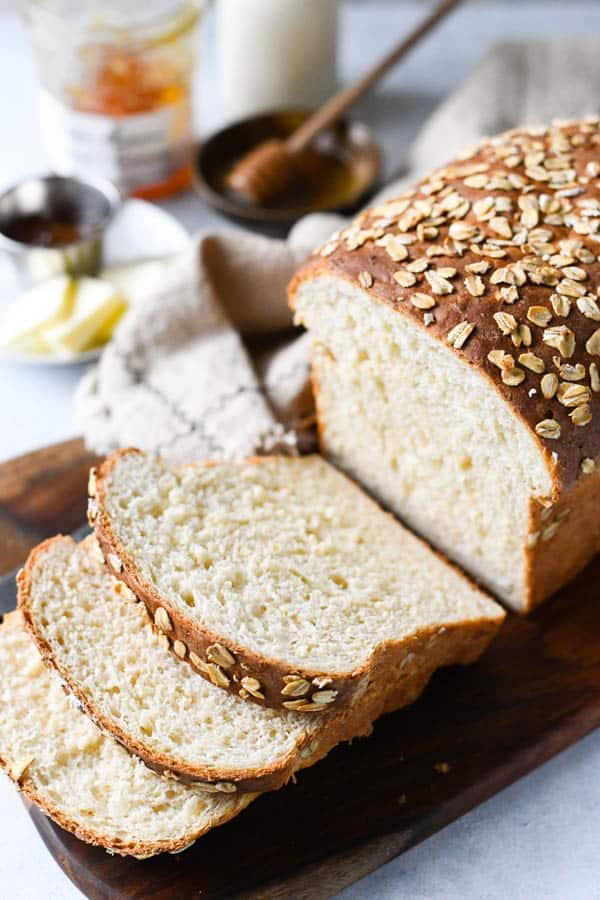
Homemade Oatmeal Bread
Nobody can resist the aroma of fresh homemade oatmeal bread baking in the oven! If you’re planning to be home for a few hours, stir together this simple dough, let it rise, bake it off, and enjoy a soft, flavorful loaf with breakfast, lunch or dinner. The classic oatmeal bread is made with yeast and includes old-fashioned rolled oats for an extra boost of fiber and a slightly heartier texture. The bread is light and fluffy on the inside, with a soft crust that appeals to even the pickiest little eaters. It has a subtly sweet taste, and is ideal for sandwiches, for morning toast with melted butter and jam, or for a side dish with supper.
Ingredients for an Easy Oatmeal Bread Recipe
Here’s a quick overview of the ingredients that you’ll need to make this simple homemade bread. As always, the exact measurements and specific instructions are included in the recipe box at the bottom of this post.
- Warm water: softens and activates the yeast.
- Active dry yeast: helps the dough rise.
- Old-fashioned rolled oats: do not substitute with quick (instant) oats or steel-cut oats.
- Sugar: feeds the yeast, tenderizes the dough, and gives the bread a slightly sweet flavor.
- Shortening: creates super soft bread with a light, fluffy texture.
- Salt: adds flavor.
- Scalded whole milk: gives the dough a richer, more velvety texture and helps it brown. Low-fat milk will also work, but the whole milk yields the best flavor and texture.
- Bread flour: I prefer bread flour over all-purpose flour because the higher protein content in bread flour yields a higher rise.
- Egg: for an egg wash that browns the crust and helps the oats adhere to the outside of the bread.
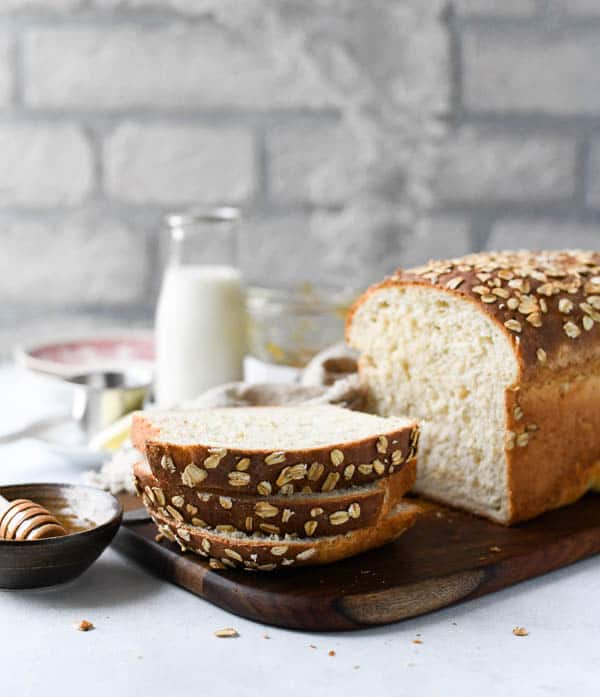
How to Scald Milk
The extra step of scalding milk only takes a few minutes, and is well worth the effort. Scalding milk is simply the process of heating milk to 180° F. Bread recipes often call for scalded milk because the scalding process deactivates the proteins in milk whey that can keep gluten from forming properly. The warm milk can also help activate yeast. In short, scalded milk helps yeast breads rise!
To scald the milk for this recipe, place the milk in a saucepan over low heat. Warm the milk until a skin forms on the top. As soon as the skin forms on top of the milk, remove the pan from the heat — be careful not to let the milk boil.
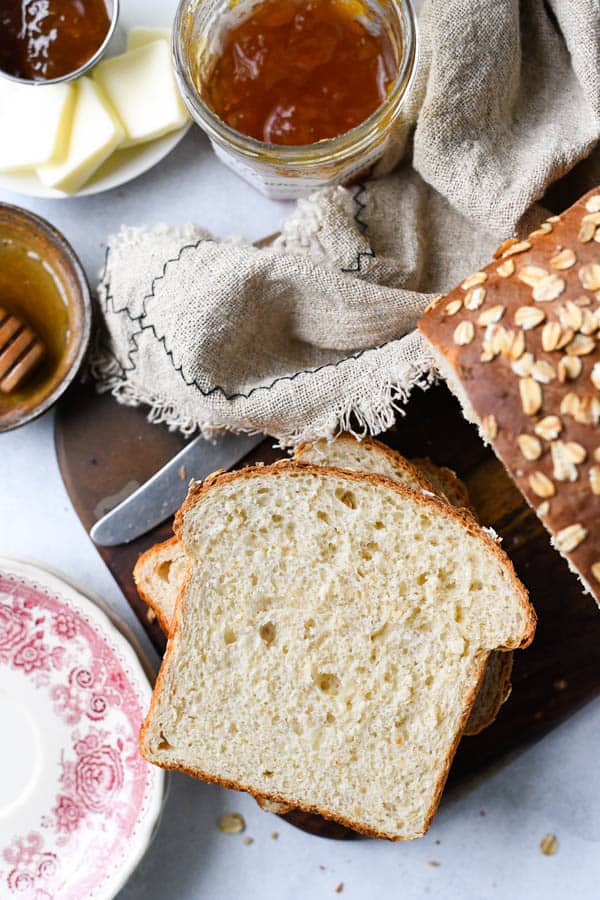
How to Make Oatmeal Bread
- Soften the yeast in warm water.
- Combine the oats, sugar, shortening and salt in a large bowl.
- Pour scalded milk over the oat mixture.
- Add the softened yeast to the oat and milk mixture.
- Gradually add flour until a soft dough forms and the mixture pulls away from the sides of the bowl.
- Knead for 8-10 minutes, or until the dough is smooth and elastic.
- First rise: transfer the dough to a greased bowl, cover, and let rise in a warm spot until doubled in size, about 1 ½ – 2 hours.
- Punch down the dough to release the air.
- Shape the dough into a loaf and place it in a greased 8 ½ x 4 ½-inch loaf pan.
- Brush egg wash on top of the dough and sprinkle with raw oats.
- Second rise: Cover loosely with foil and let the dough rise in a warm spot until doubled, about 45 minutes – 1 hour.
- Remove plastic cover.
- Bake in a 375° F oven for 30-35 minutes, or until the loaf is golden brown and sounds hollow when tapped.
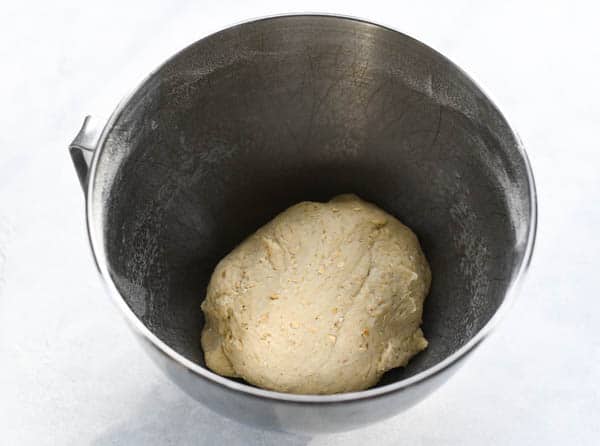
How to Knead Bread
Kneading the dough makes bread light, airy and chewy by developing the gluten. Strengthening the gluten strands gives your bread structure. Don’t worry — kneading dough is really easy!
To knead the dough by hand, flour the worktop, and then push, pull and stretch the dough. When it’s properly kneaded, the dough should be elastic and smooth.
If you’re fortunate enough to have a stand mixer, simply use the dough hook to knead the bread in the mixer. This is my preference, because it’s hands-off — just let the machine run for about 8-10 minutes.
What’s the Best Stand Mixer for Bread Dough?
If you’re shopping for a stand mixer for bread, check out this list of the best mixers for bread dough, which includes the one I use, the Kitchenaid 5-quart Artisan Series stand mixer. You can get it on Amazon for $379.99. Or, the Hamilton Beach 4-quart stand mixer is a good budget option that’s available at Walmart for $98.99.
How to Proof Bread
Proofing bread is when you give the yeast time to do its work to help the bread rise. To proof bread, place the dough in a greased bowl and let the dough rest in a warm, humid environment until it doubles in size.
If you’re having trouble proofing the bread, check the temperature of your kitchen. If your kitchen is a little too warm (above 75-80° F) or a little too cool (below about 65° F), it might be affecting the proofing stage.
If it’s on the warm side and you ended up with a dense loaf, it’s likely the bread over proofed, the yeast got too active and produced so much gas that the dough effectively popped like a balloon.
If it’s too cold, then the opposite might have happened. The yeast didn’t get a chance to become active enough and create enough gas to lift the dough. You should try letting it sit out a little longer.
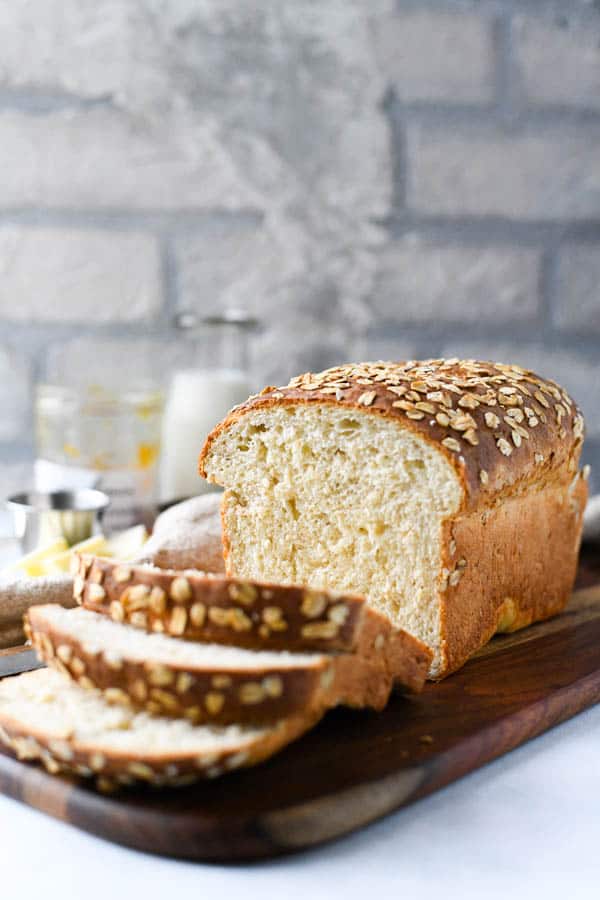
How to Tell When Oatmeal Bread is Done
The bread should be a beautiful golden brown color when it comes out of the oven. Tap the top of the loaf lightly — it will sound hollow when it’s done. If you have an instant-read thermometer, the internal temperature of the bread should be about 190-200° F.
Make Ahead
You can make the dough for this rustic oatmeal bread in advance and refrigerate it before rising and baking. To do so, prepare the dough through Step 3, transfer to a greased bowl or other airtight container, cover and refrigerate for up to 24 hours. When ready to bake, remove the dough from the fridge and let it come to room temperature. Punch down the dough, shape into a loaf, and proceed with recipe instructions.
How to Freeze Oatmeal Bread Dough
Prepare the recipe through Step 4. Punch down the dough, shape into a loaf, and place the loaf in a freezer-safe or disposable aluminum bread pan. Cover tightly with a double layer of aluminum foil and freeze for up to 3 months. When ready to bake, allow the loaves to thaw and complete the second rise at room temperature (about 5 hours). Bake as directed.
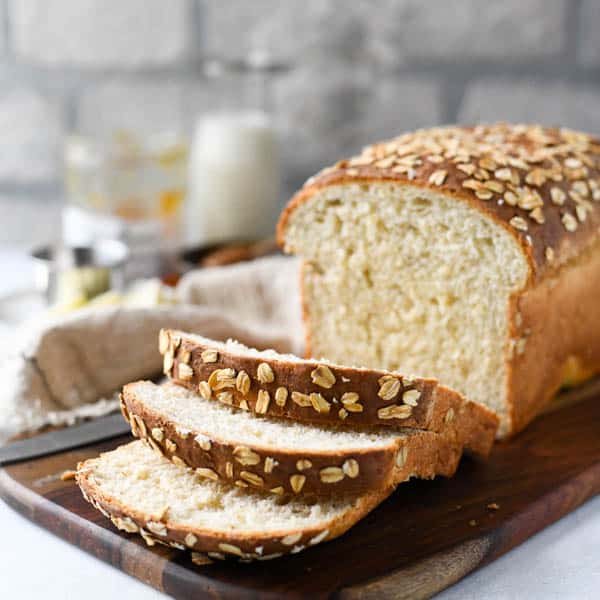
Storage
You can store the bread in a plastic bag or a bread box at room temperature. The loaf will last for 1-2 days. To help it keep longer, wrap the loaf tightly in plastic or in a Ziploc freezer bag and store in the freezer for up to 3 months.
I find countertop bread boxes to be extremely useful, both for keeping bread fresh, but also as a storage container for items as well! If you don’t have a bread box yet but are thinking of buying one, this list of the best bread boxes can get you started. I picked mine up from a local shop, but it’s very similar to this vintage-inspired bread box that you can buy on Amazon for $36.95.
When to Freeze
Allow the baked bread to cool completely on the counter for at least a couple of hours. Then freeze the bread before slicing to preserve the loaf at its peak freshness.
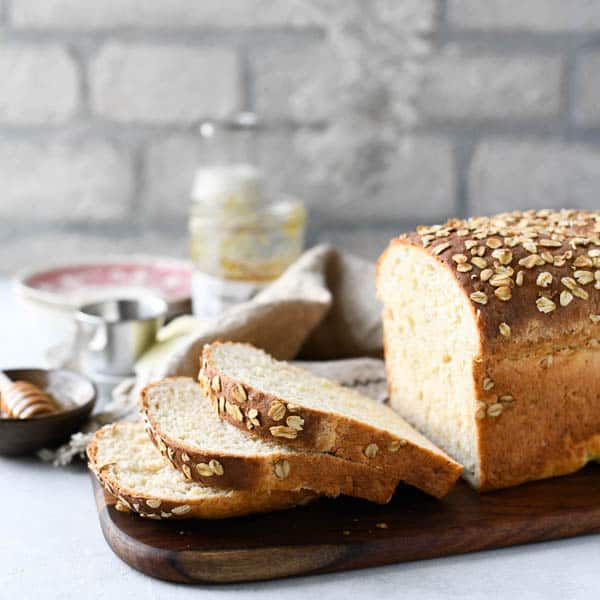
Is Oatmeal Bread healthy?
In general, homemade bread is healthier than the packaged, store-bought variety because you can control the ingredients that go into each loaf. This easy recipe uses just a handful of very basic ingredients — no preservatives, artificial colors or flavors. The rolled oats add some extra fiber and whole grains, too. Each slice of the homemade oatmeal bread has about 156 calories, 27 grams of carbohydrates, 3 grams of fat and 5 grams of protein.
Tips for the Best Oatmeal Bread Recipe
- Bread Flour vs. All-Purpose Flour: All-purpose flour has between 8 and 11 percent protein, while bread flour contains between 12 and 14 percent protein. The extra protein in bread flour results in a higher rise, so that’s my preference for this recipe.
- Make sure that you use warm water when preparing the dough — not too hot and not too cold. You want the water to feel like warm bath water (about 110-115° F). If it’s too hot you will kill the yeast; too cold and the yeast will not be activated.
- Store yeast in the freezer. Even unopened packets of yeast with a good expiration date can go bad at room temperature. Old yeast will impact the dough’s ability to rise.
- Rise in a warm spot. If your dough isn’t rising, check the temperature of your kitchen. You want a warm spot that’s about 70-75° F.
- Properly measure the flour. Always weigh the flour for the most precise measurement, or spoon and level the flour in your measuring cups — do not scoop it out of the package. The total amount of flour necessary can vary depending on different factors (such as humidity, how you measure, altitude). You’re looking for a dough that’s soft, slightly sticky (but still pulls away from the sides of the bowl). Adding too much flour will result in a dense, hard loaf of farmhouse oatmeal bread, so keep an eye on the dough as it’s mixing and add small amounts until it reaches the desired texture.
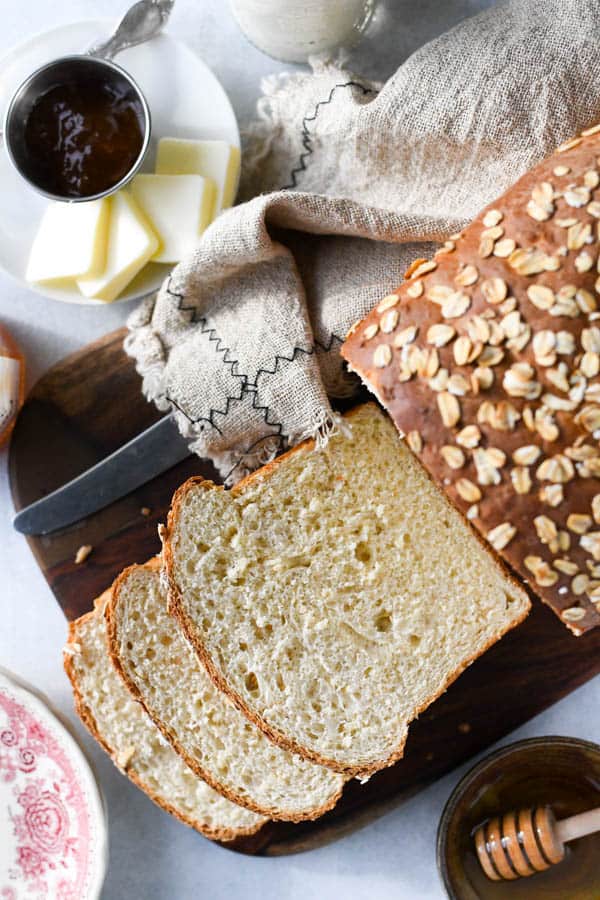
More Homemade Bread Recipes to Try
- Easy White Bread
- Crusty No-Knead Bread
- Baguette Recipe for Beginners
- Honey Wheat Bread
- Soft Dinner Rolls
- Crescent Rolls
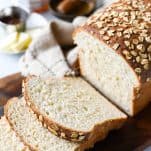
Oatmeal Bread
Ingredients
- ¼ cup warm water (about 110-115° F)
- 1 (0.25 oz) packet active dry yeast (2 ¼ teaspoons)
- 1 cup old-fashioned rolled oats, plus extra for topping (do not use instant oats, quick oats or steel cut oats)
- 2 tablespoons sugar
- 1 tablespoon shortening
- 1 teaspoon salt
- 1 cup whole milk or 2% milk, scalded (see note below for tips on how to scald milk)
- 2 – 2 ½ cups bread flour (10.625 oz total)
- Egg wash: 1 egg lightly beaten with 1 tablespoon of water
Instructions
- In a small bowl, stir together warm water and yeast. Set aside for 5-10 minutes. The softened yeast should look slightly foamy.
- Meanwhile, in the large bowl of a stand mixer fitted with the dough hook, combine oats, sugar, shortening and salt. Pour scalded milk over the oat mixture. When the oat mixture has cooled to lukewarm, add the yeast mixture.
- Gradually add the flour, ½ cup at a time, just until the mixture pulls away from the edges of the bowl in a soft ball of dough – do not add too much flour. Knead for about 8-10 minutes, or until the dough is smooth and elastic.
- Transfer the dough to a greased bowl and turn to coat the dough on all sides. Cover and let rise in a warm place until doubled in size, 1 – 2 hours.
- Punch down dough to release the air. Turn onto a lightly floured surface and shape into a loaf. Place in a greased 8 ½ x 4 ½-inch loaf pan. Brush egg wash on top. Sprinkle with a tablespoon or so of raw oats. Cover loosely with well-greased plastic wrap and let rise until doubled, 45 minutes – 1 hour. The dough should rise about 1 inch over the top edge of the pan. Carefully remove plastic cover.
- Bake at 375° F for 30-35 minutes, or until the loaf is golden brown and sounds hollow when tapped. Remove from the pan and cool on a wire rack before slicing.
Notes
- To scald the milk for this recipe, place the milk in a saucepan over low heat. Warm the milk until a skin forms on the top. As soon as the skin forms on top of the milk, remove the pan from the heat — be careful not to let the milk boil.
- Bread Flour vs. All-Purpose Flour: All-purpose flour has between 8 and 11 percent protein, while bread flour contains between 12 and 14 percent protein. The extra protein in bread flour results in a higher rise, so that’s my preference for this recipe.
- Make sure that you use warm water when preparing the dough — not too hot and not too cold. You want the water to feel like warm bath water (about 110-115° F). If it’s too hot you will kill the yeast; too cold and the yeast will not be activated.
- Store yeast in the freezer. Even unopened packets of yeast with a good expiration date can go bad at room temperature. Old yeast will impact the dough’s ability to rise.
- Rise in a warm spot. If your dough isn’t rising, check the temperature of your kitchen. Ideally, you want to find a spot that’s about 70-75° F, but this doesn’t have to be exact.
- Properly measure the flour. Always weigh the flour for the most precise measurement, or spoon and level the flour in your measuring cups — do not scoop it out of the package. The total amount of flour necessary can vary depending on different factors (such as humidity, how you measure, altitude). You’re looking for a dough that’s soft, slightly sticky (but still pulls away from the sides of the bowl). Adding too much flour will result in a dense, hard loaf of farmhouse oatmeal bread, so keep an eye on the dough as it’s mixing and add small amounts until it reaches the desired texture.
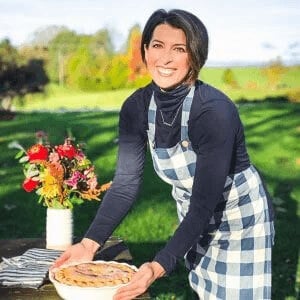
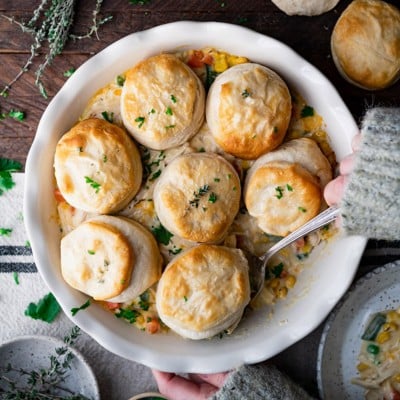
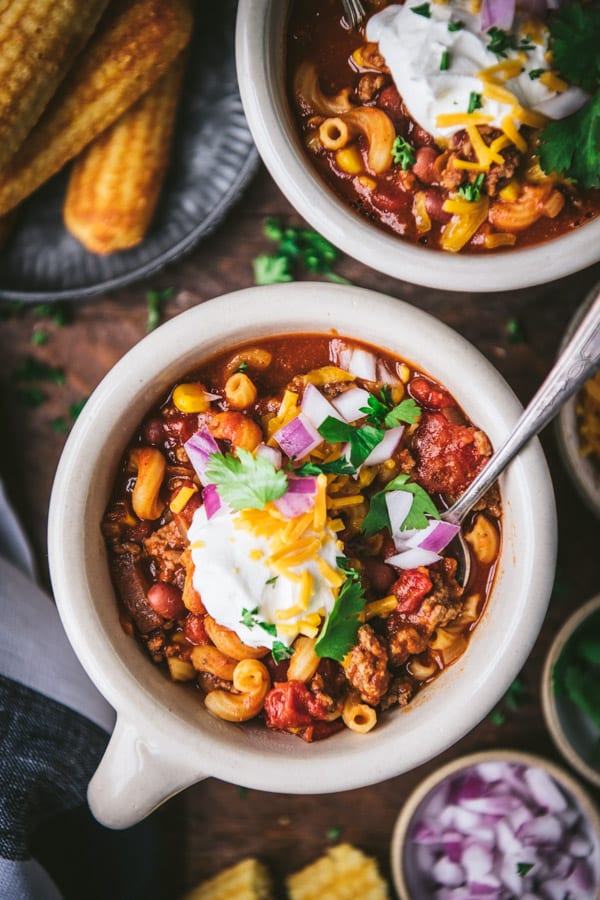
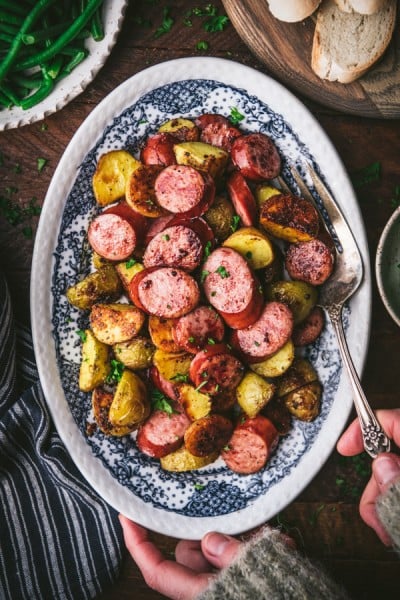








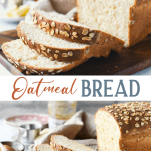
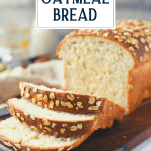
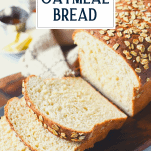
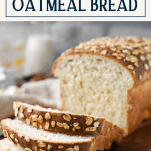
Hi, have you ever made this bread recipe in a bread machine?
Hi, Stacy! No, I’m sorry that I haven’t. I have never owned a bread machine, so I’m not familiar with how they work.
I found this recipe because I was looking for an oat bread recipe with weight measures (I won’t use a recipe with volume measurements for flour!) and I was tired of the KA recipes I had been using. I am so glad you are on board with using a scale. I wish you had all weight measurements in the recipe (saves washing measuring cups and spoons) but I let Alexa do the conversions. And then there’s your name. My grown kids are Blair and Logan, and when I first saw your name I thought it was Blair Logan for a second. Almost! I figured it was a sign that this was my recipe. Anyhoo… I LOVED the bread! I can’t believe it turned out so well because my whole milk was sour, my buttermilk had gone bad, and even my canned milk had gone bad. So I used 1 cup of water and 1/2 c milk powder. I also used 60 grams of oat flour in place of some bread flour, then I worried I would not have enough gluten so I added 2 teaspoons of KA whole grain bread improver (mostly vital wheat gluten). I used Saf instant yeast that I know is fresh so I don’t proof it, and finally, I poured boiling water instead of milk over the oats. I was a little worried, but it turned out perfect! I actually got 2 loaves out of it because I used these 7” Fat Daddio loaf pans I bought on a whim (I have 8×4 and 9×5 pans, but I’m one person so these smaller loaves are great for me). Your Farmhouse Oat Bread is a keeper! I’m glad I found you.
Thank you, Kim! I’m so glad that it worked well for you — even with some changes! Love your kids’ names, too! Hah! 🙂
Thank you so much for this great recipe! I followed the recipe exactly and my bread came out perfectly. It has a perfect, soft consistency and wonderful flavor. I would encourage anyone who enjoys baking bread to try this recipe, you’ll be glad you did! I was looking for something other than the routine white or wheat bread and this fits the bill! It is absolutely delicious toasted with homemade jam. I look forward to trying some of your other recipes.
Thank you, Helen! I’m so glad that you enjoyed it. I think another loaf is in my near future. 🙂
Hi Blair, I’ve been baking bread for a very long time. I used your formula as a base/guide for my very first attempt at an oatmeal loaf and it came out absolutely fantastic. Great stuff!! Thanks!
Not sure if this link will work but this is what it looked like: https://i.imgur.com/7t0LlgR.jpg
It looks beautiful!! Great crust!
That’s a beautiful loaf of bread! Great crust. 🙂
That’s so good to hear, Michael. Thank you for your note!
Looking forward to your other recipes! 🙂
My daughter got this recipe from her mother in law-her husbands favorite. MIL didn’t leave directions
Here is the recipe-what would your advise on directions? Method, temp etc
Christmas Bread
1C + 3 T water
2 1/3c flour
1C oats
2T dry milk
1 1/4 tsp salt
2T active dry yeast
1/4 tsp parsley
1/2 tsp basil
1/4 tsp anise
1tsp savory
2 T butter for top when finished baking
Hi Linda,
Unfortunately, we don’t have enough information to be much help with this recipe. Does this recipe look similar by chance?
Love this recipe! It’s become a standard in our house. I have multiplied the ingredients by 1.5 for a larger loaf in a 9×5 pan. Works perfectly. Thanks!
Thank you, Karen!